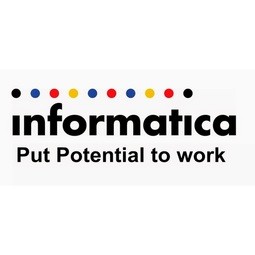
Technology Category
- Infrastructure as a Service (IaaS) - Cloud Computing
- Infrastructure as a Service (IaaS) - Cloud Storage Services
Applicable Industries
- Cities & Municipalities
- Telecommunications
Applicable Functions
- Quality Assurance
Use Cases
- Intelligent Packaging
- Onsite Human Safety Management
Services
- Cloud Planning, Design & Implementation Services
- System Integration
The Customer
Community Technology Alliance
About The Customer
The Community Technology Alliance (CTA) is a nonprofit organization that has been at the forefront of the homelessness crisis since 1991. It works with counties and communities, aiding them in their efforts to end homelessness. By collecting and analyzing data, CTA has made it easier for thousands of people to find housing and services to improve their situation. As CTA’s mission evolved, it needed a way to allow housing providers and human services agencies to exchange data so their clients wouldn’t have to contact multiple organizations or provide their information multiple times. CTA also wanted to help communities comply with the Homeless Emergency Assistance and Rapid Transition to Housing (HEARTH) Act of 2009.
The Challenge
The U.S. Department of Housing and Urban Development (HUD) reports over half a million homeless people on the streets in the United States on any given night. The Community Technology Alliance (CTA) has been working since 1991 to collect data on homelessness and match individuals to available housing and services. However, as CTA's mission evolved, it faced the challenge of enabling housing providers and human services agencies to exchange data, eliminating the need for clients to contact multiple organizations or provide their information multiple times. CTA also aimed to help communities comply with the Homeless Emergency Assistance and Rapid Transition to Housing (HEARTH) Act of 2009, which requires a coordinated or centralized assessment and placement system to prioritize access to housing and services. Compliance is demonstrated using an Annual Performance Review (APR) that community agencies submit to HUD. Communities that don’t comply risk losing their homeless assistance grants.
The Solution
CTA developed the Homeless Outreach Mobile Engagement (HOME) app, which gives human services workers access to demographic data while allowing them to record contacts with vulnerable clients in need of housing and stabilization services. To establish a single source of truth, CTA used Informatica Intelligent Cloud Services to integrate data from HOME and other systems. This solution feeds a data lake on AWS to give communities and agencies a trusted, always accessible source for analytics and reporting. The Informatica solution also integrates directly with Tableau for easy visualizations. With seamless data and application integration, CTA is giving communities a platform to develop data-driven solutions to address poverty and homelessness. Through coordinated entry, communities can offer faster client access to housing and services while making sure that each client is properly screened for eligibility.
Operational Impact
Quantitative Benefit

Case Study missing?
Start adding your own!
Register with your work email and create a new case study profile for your business.
Related Case Studies.

Case Study
Turning A Stadium Into A Smart Building
Honeywell created what it called the “intelligent system” for the National Stadium in Beijing, China, turning the venue for the opening and closing events at the 2008 Summer Olympics into a “smart building.” Designed by highly controversial artist Ai Weiwei, the “Bird’s Nest” remains one of the most impressive feats of stadium architecture in the world. The 250,000 square meter structure housed more than 100,000 athletes and spectators at a time. To accommodate such capacity, China turned to Honeywell’s EBI Integrated Building Management System to create an integrated “intelligent system” for improved building security, safety and energy efficiency.
.png)
Case Study
Smart Street Light Network (Copenhagen)
Key stakeholders are taking a comprehensive approach to rethinking smart city innovation. City leaders have collaborated through partnerships involving government, research institutions and solution providers. The Copenhagen Solutions Lab is one of the leading organizations at the forefront of this movement. By bringing together manufacturers with municipal buyers, the Copenhagen Solutions Lab has catalyzed the development and deployment of next-generation smart city innovations. Copenhagen is leveraging this unique approach to accelerate the implementation of smart city solutions. One of the primary focus areas is LED street lighting.

Case Study
Buoy Status Monitoring with LoRa
The Netherlands are well-known for their inland waterways, canals, sluices and of course port activities. The Dutch Ministry of Infrastructure indicates that there are thousands of buoys and fixed items in and near water environments that would profit from IoT monitoring. One of the problems with buoys for example, is that they get hit by ships and the anchor cable breaks. Without connectivity, it takes quite some time to find out that something has happened with that buoy. Not to mention the costs of renting a boat to go to the buoy to fix it. Another important issue, is that there is no real-time monitoring of the buoys at this moment. Only by physically visiting the object on the water, one gains insight in its status.

Case Study
China Mobile Smart Parking
Smart Parking, powered by NB-IoT technology, is making it easier for drivers to find free parking spots. Cities can better manage their parking assets and maximize the revenue available to them as a result. Drivers searching for parking create congestion and pollution by circling and hunting for available parking. Smart Parking services are able to significantly ease these problems by guiding a driver directly to a parking space.

Case Study
Barcelona Case Study
Barcelona’s heavy traffic and its associated high levels of pollution were the primary factors that motivated some companies and universities to work on strategies for improving traffic in the city centre. Bitcarrier is one of the technologies involved in the In4Mo Project, whose main objective is to develop the applications that form the core of smart mobility, one of the fundamental pillars of the smart city concept.




